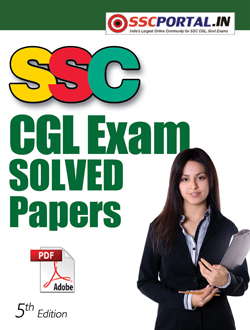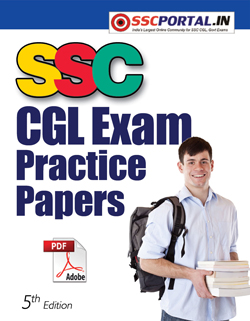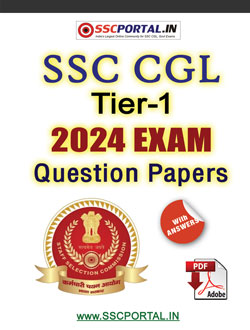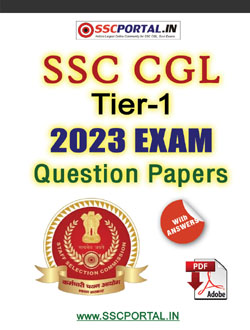NEW! SSC CGL PDF NOTES
SSC CGL MCQ : Physics
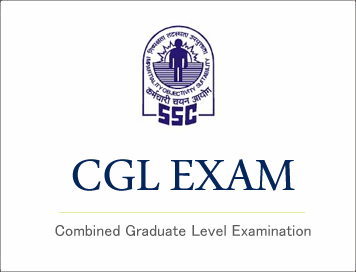
SSC CGL MCQ : Physics
1. Which of the following methods is/are suitable for soil conservation in hilly region?
1. Terracing and contour bunding
2. Shifting cultivation
3. Contour ploughing
Select the correct answer using the code give below.
(a) 1 and 3 only
(b) 2 only
(c) 3 only
(d) 1, 2 and 3
2. National Biodiversity Authority is located at
(a) Puducherry
(b) Mangalore
(c) Hyderabad
(d) Chennai
3. The rapidly growing mass of phytoplankton covering the surface water of lake or pond is known as:
(a) Water pollution
(b) Water hyacinth
(c) Eutrophication
(d) Water bloom
4. Biodiversity is richer in:
(a) tropical regions
(b) polar regions
(c) temperate regions
(d) oceans
5. Which of the gas is not known as greenhouse gas?
(a) Methene
(b) Carbon dioxide
(c) Nitrous oxide
(d) Hydrogen
6. Transboundary pollution (or) Acid rain is caused by:
(a) nitrogen oxide and sulphur dioxide
(b) Carborn monoxide
(c) Carbon dioxide
(d) Hydrocarbon
7. Acceptable “Noise Pollution Level” in India range between:
(a) 10 – 15 dec
(b) 16 – 35 dec
(c) 40 – 45 dec
(d) 70 – 100 dec
8. Endosulfan spray on cashew crop resulted in the pollution to the tune of tragedy in:
(a) Tamil Nadu
(B) Keral
(c) Andhra Pradesh
(d) Karnataka
9. Which of the following series is true about energy flow in an ecosystem?
(a) Prodcucers → Decomposeers → Consumers.
(b) Decomposers → Consumers → Producers.
(c) Prodcucers → Consumers → Decomposeers.
(d) Consumers → Prodcucers → Decomposeers.
10. Chlorofluro carbons are widely used in:
(a) Micro overns
(b) Solar heaters
(c) Washing machines
(d) Refrigerators
11. In which Eco-system Grassland is included?
(a) marine
(b) Fresh Water
(c) Terrestrial
(d) Artificial
12. The main pollutant responsible for Bhopal Gas Tragedy is:
(a) Methyl isocyanate
(b) Bromine
(c) Chlorofluro carbon
(d) Chlorine
13. An organism which can monitor air pollution is:
(a) Alage
(b) Fungi
(c) Bacteria
(d) Lichen
14. Which among the following is symbiosis Nitrogern – fixing bacteria?
(a) Pseudomoria
(b) Rhizobium
(c) Azotobacter
(d) Xanthomonas
15. The concentration of pollutants in atmosphere is generally expressed in:
(a) Parst per billion
(b) Kilogram per square metre
(c) Parts per trillion
(d) Parst per million
(E-Book) SSC CGL (Tier-1) Exam 2020 Solved Question Papers PDF Download
16. Which one among the following rroups is the most abundant in terms of number os species identified?
(a) Fundgi
(b) Green plants
(c) Bacteria
(d) Insects
17. Which of the following can be found as pollutants in the drinking water in some parts of India?
1. Arsenic
2. Sorbital
3. Dluoride
4. Formaldehyde
5. Uranium
Select the correct answer usning fthe codes given below.
(a) 1 and 3 only
(b) 2, 4 and 5 only
(c) 1, 3 and 5 only
(d) 1, 2, 3, 4 and 5
18. Due to improper /indiscrimate disposal of old and used computers or their parts, which of the following are released into the environment as e- waste?
1. Beryllim
2. Cadmium
3. Chromium
4. Heptachlor
5. Mercury
6. Lead
7. Plutonium
Select the correct answer using the codes given below:
(a) 1, 3, 4, 6 and 7 only
(b) 1, 2, 3, 5 and 6 only
(c) 2, 4, 5 and 7 only
(d) 1, 2, 3, 4, 5 6 and 7
19. Which one of the following terms describes not only the physical space occupied by an organism, but also its functional role in the community of organism?
(a) Ecotone
(b) Ecological niche
(c) Habitat
(d) Home range
20. The depletion of Ozone layer is mainly due to-
(a) Radioactive rays
(b) Chloroflurocarbons
(c) Volcanic Eruptions
(d) Aviation fuels
21. The chipko Movement
1. was an environmental movement to prevent cutting down of trees
2. Raised the questions of ecological and economic exploitation
3. Is a movement against alcoholism as its bradened agenda?
4. Demanded that local communities should have control over their natural resources
Select the correct answer using the code given below.
(a) 1 and 2 only
(b) 2 and 3 only
(c) 1, 3 and 4 only
(d) 1, 2, 3 and 4
22. Which of the following factors can decrease biological oxygen demand (BOD) of any freshwater ecosystem?
(a) Large amount of sewage
(b) Lrage biomass accumulation and decomposition
(c) Increased organic matter pollution
(d) Low temperature and low plant biomass accumulation
23. Industrial and technological advancement has brought about a rapid exploration of forest resources. Which one among the following is not the impact of above phenomenon?
(a) Declining wild life
(b) Increase in ground water level
(c) Declining biodiversity
(d) Increasing surface water flow
24. Which one among the following is responsible for formation of ‘Ozone Holes’ in the stratosphere?
(a) Benzophye
(b) Hydrocarbons
(c) Chlorofluorocarbons
(d) UV radiation
25. What type of mixture is smoke?
(a) Solid mixed with a gas
(b) Gas mixed with a gas
(c) Liquid mixed with a gas
(d) Gas mixed with a liquid and solid
26. Which one among the following is not responsible for ‘green house effect’?
(a) Water
(b) Carbon dioxide
(c) Nitrogen
(d) Chlorofluorocarbons
27. Air pollution by “Fly ash” is caused by:
(a) Hydro-electric Power Stations
(b) Power generation through wind – farms
(c) Coal combustion in Thermal Power Plants
(d) Nuclear Power Plants
28. The ‘super bug’ used in controlling oil pollution is:
(a) An algal starin
(b) A fungal strain
(c) A bacterial strain
(d) A water flea
29. The natural disaster in which carbondi-oxide suddently erupts from adeep lake water is known as ………
(a) Liminic
(b) Lacaustrin
(c) Fluvial
(d) Glacial
30. Which one of the following is the most stable ecosystem?
(a) Mountain
(b) Ocean
(c) Forest
(d) Desert
31. A population that is growing exponentially in the absence of limiting factors can be illustrated by a (n)…..
(a) S-shaped curve
(b) J- shaped curve
(c) Curve that terminated in a plateau phase
(d) Tolerance curve
32. A one – way relationship where one species benefits at the expense of another is called _____.
(a) Commensalism
(b) Competative exclusion
(c) Parasitism
(d) An obligatory relationship
33. A symbiotic relationship in which both species benefit is best described as _______.
(a) Commensalism
(b) Competative exclusion
(c) Parasitism
(d) An obligatory relationship
34. Which of the following is a primary consumer?
(a) Cow
(b) Dog
(c) Hawk
(d) Bear
35. The “greenhouse effect” refers to:
(a) Increasing agricultural yields
(b) Gradual warming of the earth’s surface
(c) Build-up of toxic airborne pollutants
(d) Reduction in the earth’s ozone layer
36. Bacteria and fungi act as ____ within an ecosystem.
(a) Primary producers
(b) Primary consumers
(c) Secondary consumers
(d) Decomposers
37. What is the term for the maximum number of individuals that an area can support indefinitely?
(a) Biotic potential
(b) Carrying capacity
(c) Niche
(d) Maximum density
38. All of the organisms living in a particular area make up _____.
(a) A food chain
(b) A population
(c) A biological community
(d) A biosphere
39. Project Tiger, a programme to maintain a viable population of tigers in the country and to chalk out areas for their habitat, was launched in the year
(a) 1775
(b) 1973
(c) 1974
(d) 1971
40. SPM stands for
(a) Suspended Particular Matter
(b) Standard Particles Material
(c) Suspended Particles Material
(d) None of the above
41. The massive hole in the ozne layer over the Antharctica was first discovered in
(a) 1976
(b) 1985
(c) 1960
(d) None of these
42. India would phase out the production and consumption of the controlled ODS (ozone –depleting substances) withing the time frame and limits specified in the
(a) Vienna convention
(b) Basel Convention
(c) Montreal Protocol
(d) Agenda 21
43. This strain of rice was one of the first High Yielding Varieties of seeds developed in the world. Name it
(a) IR-8
(b) IS- 7
(c) RS – 8
(d) RV – 9
44. What is the primary source of food for marine life?
(a) Phytoplankton
(b) Zooplankton
(c) Sea weed
(d) Grass
45. Earth Summit was held in –
(a) Chicago
(b) Adilaide
(c) Rio de Jenerio
(d) London
46. Which of the following is biodegradable?
(a) Paper
(b) D.D.T.
(c) Aluminium
(d) Plastic
47. The largest ecosystem of the Earth is-
(a) Biosphere
(b) Hydrosphere
(c) Lithosphere
(d) Biome
48. An artificial ecosystem is represented by-
(a) Pisciculture tank
(b) Agriculture land
(c) Aquarium
(d) Zoo
49. Global warming is expected to result in-
(a) Increase in level of sea
(b) Change in crop pattern
(c) Change in coastline
(d) Each of the above
50. The sun is a
(a) Producer of water
(b) Secondary source of energy
(c) Primary producer of energy
(d) Teritiary Producer of energy


